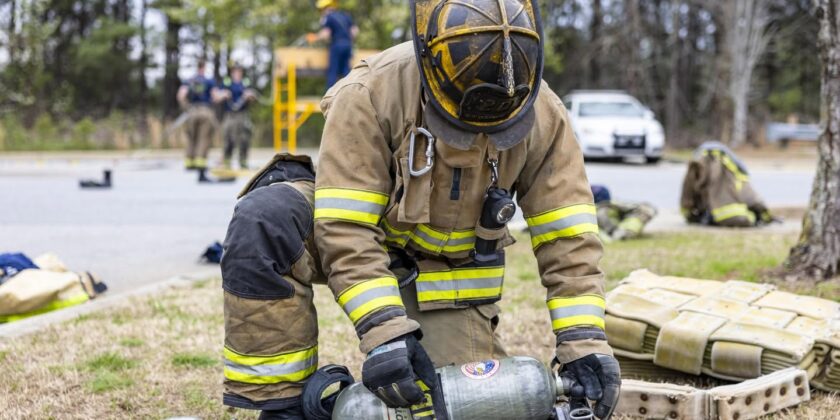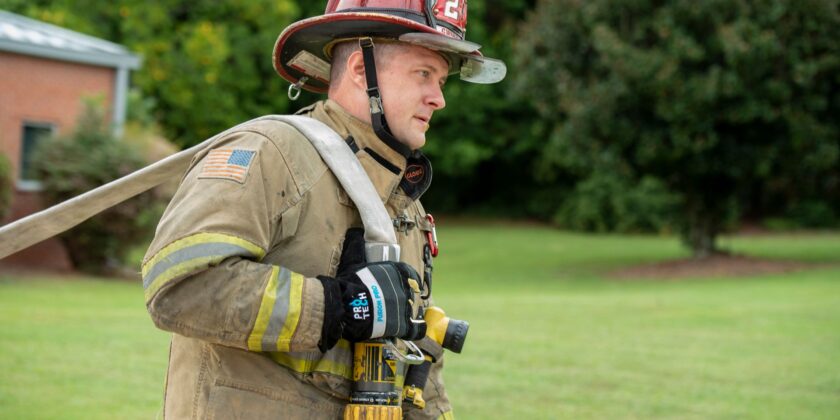FireFighters — LearnTheLingo-19
Firefighters wear numerous pieces of equipment that provide greater protection from blazing flames and dangerous toxins. One of our most critical pieces of equipment is the self-contained breathing apparatus, which supplies firefighters with a fixed supply of breathable air. SCBAs have several features, including a facepiece, hose and regulator, an air cylinder, and more. Each air cylinder can weigh roughly 8 to 20 pounds and provide anywhere from 30 to 60 minutes of air to the firefighter wearing it, depending on their breathing rate.











